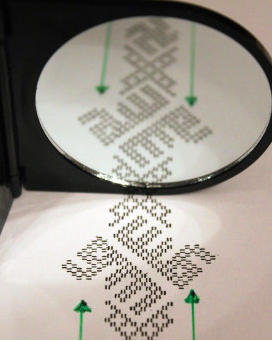 WHAT was previously thought to be typical Viking Age patterns in silver on woven bands of silk in Viking Age graves are actually geometric Kufic characters as per a new research at Sweden’s Uppsala University. The Arabic characters appear in burial costumes in Viking Age boatgraves, as well as in the chamber graves clothing of central Viking Age sites such as Birka in Mälardalen.
WHAT was previously thought to be typical Viking Age patterns in silver on woven bands of silk in Viking Age graves are actually geometric Kufic characters as per a new research at Sweden’s Uppsala University. The Arabic characters appear in burial costumes in Viking Age boatgraves, as well as in the chamber graves clothing of central Viking Age sites such as Birka in Mälardalen.
“One exciting detail is that the word ‘Allah’ is depicted in mirror image,” says Annika Larsson, researcher in textile archaeology at the Department of Archaeology and Ancient History at Uppsala University. “It is a staggering thought that the bands, just like the costumes, was made west of the Muslim heartland. Perhaps this was an attempt to write prayers so that they could be read from left to right, but with the Arabic characters they should have. That we so often maintain that Eastern objects in Viking Age graves could only be the result of plundering and eastward trade doesn’t hold up as an explanatory model because the inscriptions appear in typical Viking Age clothing that have their counterparts in preserved images of Valkyries.”
It was while working to recreate textile patterns for the Viking Couture exhibit at Enköping Museum, Enköping, Sweden, that the researchers discovered that the woven bands contained ancient Arabic script, Kufic characters, invoking both Allah and Ali. The Kufic characters were found in the Viking Age in mosaics on burial monuments and mausoleums, primarily in Central Asia. Similar Kufic characters appear in the grave costumes in Viking Age chamber graves in central sites such as Birka in Mälardalen, as well as in boatgraves in the area around Gamla Uppsala. Continue reading “New research finds Allah and Ali in Viking Age patterns”